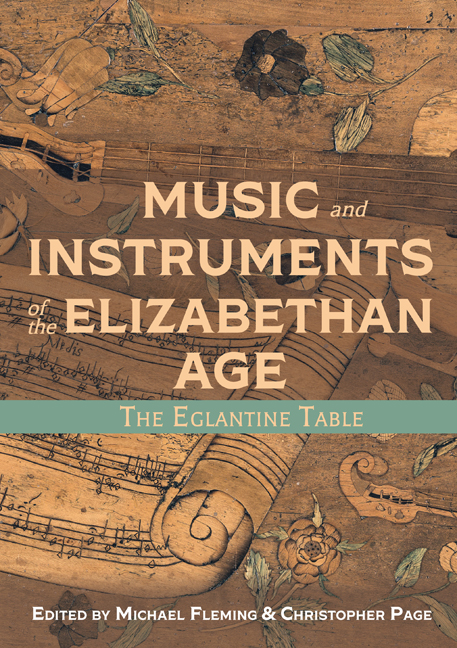Book contents
- Frontmatter
- Dedication
- Contents
- List of Illustrations
- Foreword
- Acknowledgements
- Note to the Reader
- List of Abbreviations
- Introducing the Eglantine Table
- Part I Silent Things
- Part II Music and Instruments
- Part III Broader Views of the Eglantine Table
- Appendices
- Glossary
- Bibliography
- List of Contributors
- Index
- Plate section
13 - The Wind Instruments
Published online by Cambridge University Press: 24 March 2021
- Frontmatter
- Dedication
- Contents
- List of Illustrations
- Foreword
- Acknowledgements
- Note to the Reader
- List of Abbreviations
- Introducing the Eglantine Table
- Part I Silent Things
- Part II Music and Instruments
- Part III Broader Views of the Eglantine Table
- Appendices
- Glossary
- Bibliography
- List of Contributors
- Index
- Plate section
Summary
With the wind instruments, the designer of the Eglantine Table makes a decisive turn towards the exclusively professional resources of household musicians, of minstrels employed (sometimes on a casual basis) as signalling trumpeters, and of municipal musicians, the waits. The Table shows eight such instruments, all of which are in frieze A: three at one end, and five at the other. With some inaccuracies, the Table shows all the principal types of the period with three exceptions: the pipe with its tabor, the organ (no keyboard instruments appear on the Table) and the sackbut or trombone, always less commonly seen and used in Britain than in central Europe. Those chosen for inclusion can be nonetheless taken as emblematic of every kind of aristocratic engagement with music in the Elizabethan period: domestic felicity, indoor and outdoor festivities, hunting, artistic music-making, warfare, and courtly and household ceremonial.
Reading frieze A from right to left as we stand immediately in front of that frieze, we see what may be a recorder (it is certainly a duct flute), a case for transverse flutes which are probably military fifes, a pair of cornetts, a trumpet, a curled horn, a bagpipe and a pair of shawms (Plates 7 and 11). With the exception of the curled horn with fingerholes, whose specific Tudor name (if it had one) is unknown, all the wind instruments shown on the Table are named in the inventories of instruments belonging to Henry VIII drawn up in 1542 and 1547. Each is portrayed in a reasonably realistic manner but each one is problematic in some respect or in matters of detail.
The duct flute (total length 283 mm) is shown with a twist in its body so that the fingerholes are displayed in front view, while the upper part of the body, with the mouth or window, is misaligned with the fingerholes by some 45 degrees, so that the curved beak of the mouthpiece can be seen in semi-profile. A similar twist to ensure visibility of detail can be seen in the portrayal of several of the stringed instruments, allowing the side ribs and the profile of the scroll or the pegbox to be seen which, without the distortion, would be invisible.
- Type
- Chapter
- Information
- Music and Instruments of the Elizabethan AgeThe Eglantine Table, pp. 181 - 188Publisher: Boydell & BrewerPrint publication year: 2021

